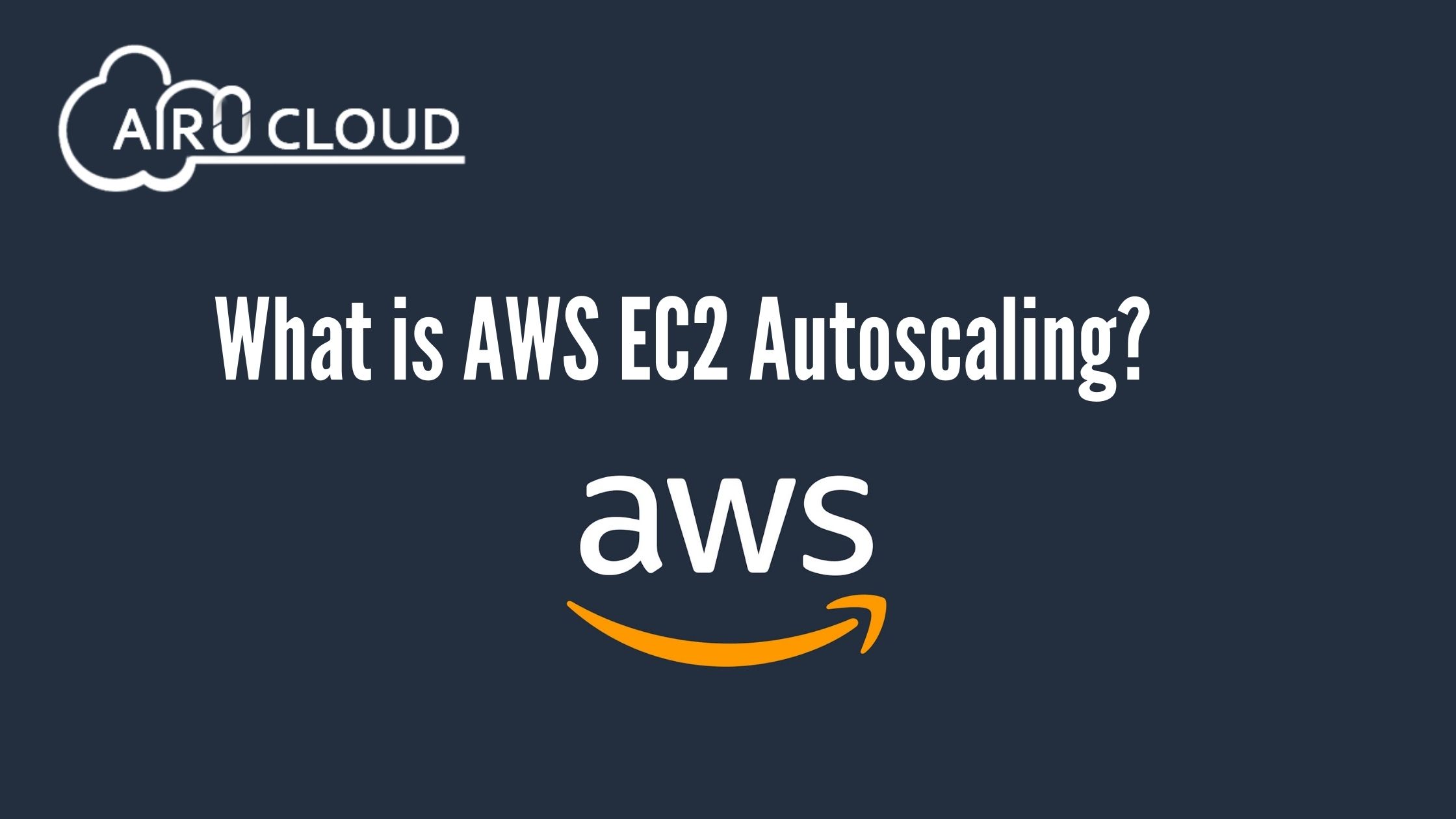
Auto-scaling is the capability made into AWS to ensure you have the right EC2 instances provisioned to allow the load of your app. Using Auto-scaling, you can delete the guesswork in choosing how many EC2 instances are needed to provide an acceptable level of performance for your app without over-provisioning resources and incurring unnecessary costs.
When you are executing workloads in production it is a better thought to use Amazon CloudWatch to monitor resource usage like CPU usage, however when desired borders are exceeded, CloudWatch will not default provision more resources to hold the increased load, which is where auto-scaling comes into play.
Depending on the character of your app, it is usual for traffic loads to differ depending on the time, or day of the week.
If you provide enough EC2 instances to cope with the highest demand, then you will have plenty of other days and time periods where you have lots of ability that remains unwanted. Which means you are paying for instances that are laying idle.
Conversely, if you do not provide enough capacity, then in peak times when the processing power needed to provide acceptable actions is needed by demand, then your app’s performance will destroy and you may have users experiencing severe slow or even timeouts due to lack of available cpu storage.
Auto-scaling is the solution, by making you automate the addition and removal of EC2 instances really based on monitored metrics like CPU usage. This makes you to minimise costs during the time of low demand, but ramp up guides during peak load times so app performance is not affected
What are Autoscaling components?
There are 3 components needed for auto scaling.
Launch Configuration
These things relate to what will be launched by your autoscaler. Same as launching an EC2 instance from the console, you explain what AMI to use, what instance kinds to add and which safety groups and roles the instances should need for it.
Auto Scaling Group
This thing of autoscaling relates to where the autoscaling should act. Which VPC and subnets to use, what hold balancer to attach, what the minimum and maximum of EC2 instances to scale out and in and the desired needed number.
If you made the minimum instance number to 2, then should the instance count be made below 2 for any reason, the autoscaler will include back instances until the lowest number of EC2 instances are executing.
If you make the number of instances to 10, then the autoscaler will keep including EC2 instances when CPU load warrants it until you reach 10, at which point no additional instances will be included even if CPU load is maxed out.
Auto Scaling Policy
This third component of autoscaling relates to when auto-scaling is invoked. This can be charged like a specific day and time or on-demand based on checked metrics that will invoke the addition and deletion of EC2 instances from your workload.
What about Dynamic AWS Ec2 Autoscaling?
One method of dynamic auto scaling is to enable Amazon CloudWatch to trigger auto-scaling when thresholds are not limited.
You can make performance from the CloudWatch alarm when CPU use exceeds or is lower than an already explained threshold and you can also explain the time period that the out-of-border condition should persist. So for instance, if the CPU threshold is larger than 80% for 5 minutes, then an auto-scaling performance happens. You can also make a Dynamic Scaling Policy when building the ASG to scale instances in and out based on a few thresholds.
How to set up an AWS EC2 Autoscaling group?
- To set up EC2 Autoscaling, you first are required to make a new ASG which can be identified in the EC2 dashboard.
- The first step when building the new ASG is to name the group and optionally click a previously saved launch template.
- To build a launch template, type the new template dialogue. First you will be required to name the template and write the version.
- Next you will be required to choose which Amazon device Image to use which contains the OS and architecture to provision.
- Now you should make or choose a key-pair to use to hold the instances provisioned within the ASG and nominate whether you target to make the resources within a VPC or not.
- Next you can choose to keep volumes and resource tags and then build the template.
- Now we can use the template to build the ASG by making the latest ASG name and choosing the template and advancing to the next following page.
- The next step is to “Configure settings” step where you can be with the launch template config
- The next step “Advanced Options” makes you to attach or built a load balancer and making an optional health check monitoring.
- Once you made the auto scaling will provide the desired number of instances and then respond to loads and scale out and in as needed.
- To control the auto scaling policies, you can create the Automatic Scaling tab and build a dynamic scaling policy.
- To remove the ASG, you choose the ASG from the EC2 Auto scaling groups dashboard and choose delete.
If you have any questions about this subject or have to get services and the best Auto Scaling EC2 services. Feel free to contact us. AIR ZERO CLOUD will be your digital friend. Email id: [email protected]
 Author - Johnson Augustine
Author - Johnson Augustine
Cloud Architect, Ethical hacker
Founder: Airo Global Software Inc
LinkedIn Profile: www.linkedin.com/in/johnsontaugustine/
